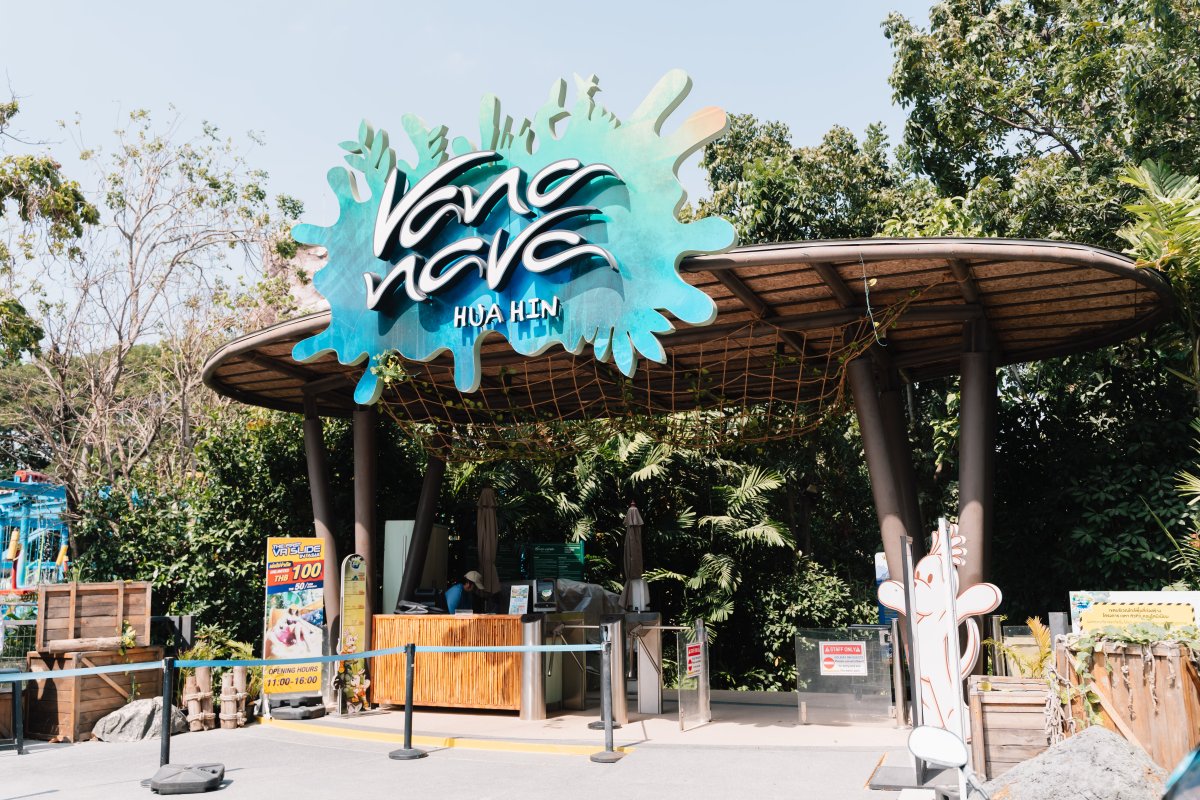-
Posts
37,057 -
Joined
-
Last visited
-
Days Won
5
Content Type
Events
Forums
Downloads
Quizzes
Gallery
Blogs
Everything posted by CharlieH
-
My First Car aged 17 - this is a '68 mine was a '65 - same color though. paid £110
-
The violence or any other aspect of life is no different here than many parts of the world. Generally if you are rural you are even less likely to encounter any issues, as thats not generally the Thai nature or disposition . Surprised your wife, a Thai, would even make such a comment.
- 125 replies
-
- 14
-

-

-

-

-

Considering renting a townhouse - looking for recommendations to find
CharlieH replied to AussieInBkk's topic in Bangkok
https://www.fazwaz.com/- 1 reply
-
- 1
-

-
A Quick Guide Apple cider vinegar (ACV) with the mother is a type of unfiltered, unpasteurized vinegar made from fermented apple juice. The "mother" refers to strands of beneficial bacteria, enzymes, and proteins that give the vinegar its cloudy appearance and are thought to provide health benefits. How It's Used As a Beverage: Mix 1–2 tablespoons in water, often with honey or lemon. In Cooking: Use in salad dressings, marinades, or sauces. Topically: Sometimes applied to skin or hair for its potential health benefits. Weight Loss: Often taken before meals to help curb appetite. Benefits Gut Health: Contains probiotics, supporting digestion and gut health. Blood Sugar Control: May help lower blood sugar levels and improve insulin sensitivity. Weight Loss: Can promote fullness, potentially aiding in weight management. Heart Health: May help reduce bad cholesterol and improve heart health. Antimicrobial: Known for its natural disinfectant properties. Contraindications Tooth Enamel Erosion: Due to its acidity, dilute ACV and rinse after drinking. Digestive Issues: Can cause irritation, especially if consumed undiluted. Medication Interactions: May interact with medications, particularly for diabetes or heart conditions. Skin Sensitivity: Can irritate skin when applied directly. Apple cider vinegar with mother is a versatile, natural product that offers several potential health benefits, particularly for digestion, weight management, and gut health. However, it’s important to use it mindfully, particularly in the context of potential side effects and interactions with medications. Always consult with a healthcare professional if you have any underlying health conditions or concerns. Whether you incorporate it into your diet as a drink or use it for its antimicrobial properties, ACV with mother can be a valuable addition to a balanced lifestyle when used correctly. d6243ad0006eeee6b7efb804f93d445d.mp4
-
Also nice with melted cheese over the marmite 👍😀
-
Toast. It’s simple, comforting, and oh-so-versatile. FFormant expats in Thailand, it’s a go-to for a taste of home—a familiar break from Thai cuisine when you’re craving something nostalgic and comforting. Whether it’s slathered with butter and jam, topped with baked beans and a fried egg, or a classic like cheese on toast, this humble dish brings a slice of comfort wherever you are. But what’s the secret to the perfect toast here in Thailand? Let’s break it down, slice by slice, and get your tips ! What Bread Are You Toasting? The bread makes all the difference. Are you making do with what’s on the shelves at Big C, Tesco, or your local 7-Eleven? Maybe you’ve found sliced bread that works just fine, or perhaps you’re lucky enough to have access to artisanal or international-style loaves. In cities like Bangkok, Chiang Mai, or Phuket, there are bakeries that cater to international tastes, offering sourdough, rye, or seeded options. If you’ve discovered one, we’d love to know! For those in smaller towns, how do you manage? Do you make your own bread, or grab whatever’s available and make it work? Butter Before or Straight to Toppings? Once you’ve toasted your bread, what’s your method? Do you butter it first for that rich, indulgent layer, or skip the butter and go straight to the toppings? Some say butter is a must for the perfect bite, while others prefer a lighter, topping-focused approach. Back Under the Grill or Straight to Plate? Here’s a big question: after adding your toppings, do you pop the toast under the grill for a melty, golden finish? Or is it all about the simplicity of toaster-to-plate? Cheese lovers might insist on the grill, while avocado fans may prefer it fresh and cool. Top 10 Toast Toppers to Try Here are some favorite "on toast" ideas to inspire you: Avocado Toast – Mashed avocado with salt, pepper, and chili flakes, or topped with a poached egg. Eggs on Toast – Scrambled, poached, or fried eggs with seasoning. Tomato and Basil – Fresh slices with olive oil or balsamic drizzle. Peanut Butter and Banana – Sweet and satisfying, with a sprinkle of cinnamon or honey. Smoked Salmon – Paired with cream cheese, capers, and dill. Baked Beans and Fried Egg – A hearty classic for a filling breakfast. Ricotta and Honey – Sweet and creamy, topped with a sprinkle of nuts. Mushrooms on Toast – Sautéed garlic mushrooms with a touch of thyme. Nutella and Strawberries – Perfect for a sweet-tooth craving. Cheese on Toast – Whether it’s cheddar or a local alternative, it’s always a hit. A Familiar Break from Thai Cuisine Let’s face it—while we may love Thai food, there are times when we just crave something familiar. Toast is the ultimate comfort food: easy to make, endlessly adaptable, and undeniably satisfying. What’s Your Toast Story? What bread do you use, and where do you get it? Do you butter it first or skip the butter? Any topping combinations you swear by? Have you found any great bakeries or supermarkets for bread and toppings in your area? Share your toast tips and tricks in the comments please we might find something new to try !
-
The 1969 Moon landing remains one of humanity's most iconic achievements, but over the years, it has sparked intense debate. While the world watched as Neil Armstrong took his historic first steps, a vocal group of skeptics questioned whether it was all a hoax. Let's explore some of the most well-known conspiracy theories surrounding the lunar landing, present the facts, and invite you to draw your own conclusions. Myth #1: The Van Allen Radiation Belts The Claim: Some argue that the astronauts couldn’t have passed through the Van Allen radiation belts without being exposed to lethal doses of radiation, making the trip to the Moon impossible. The Answer: In reality, the Apollo missions passed through the radiation belts quickly, minimizing the astronauts' exposure. The spacecraft were also equipped with shielding that protected the crew, and the radiation levels encountered were well within safe limits for short-duration exposure. Myth #2: The Missing Blast Crater The Claim: Skeptics point out that when the lunar module landed, there was no visible blast crater underneath it, which they argue would have been created by the powerful engine. The Answer: The Moon’s low gravity and the lunar module’s gentle descent required minimal engine thrust. This resulted in no significant disturbance to the surface. Additionally, the Moon's surface is composed of rocky and compact material, which didn’t lend itself to creating a crater. Myth #3: Perfectly Lit Photographs The Claim: Some argue that the photographs taken on the Moon are too well-lit, especially in areas that should have been in shadow, implying artificial lighting was used. The Answer: The photos appear well-lit because the Moon’s surface reflects sunlight. This natural reflection, combined with the astronauts' white suits, illuminated even the shadowed areas. This is a standard effect in photography when light reflects off nearby surfaces. Myth #4: No Exhaust Flames The Claim: Critics question why the lunar module’s engine didn't produce visible flames during takeoff from the Moon's surface, suggesting the footage was faked. The Answer: The lunar module used hypergolic fuels, which burn without visible flames in a vacuum. This is entirely consistent with how such engines function in space, where combustion doesn’t produce the same visible effects as it would in an atmosphere. Myth #5: Stanley Kubrick Filmed the Moon Landing The Claim: A popular theory suggests that filmmaker Stanley Kubrick, renowned for his work on 2001: A Space Odyssey, was hired by NASA to direct the faked Moon landing footage. The Answer: There is no credible evidence to support this theory. Kubrick himself denied any involvement, and the complexity of the Apollo missions, along with corroborating evidence from multiple countries, debunks the idea that the landings were staged. The technology of the time would have made it virtually impossible to convincingly fake such a monumental event. Myth #6: The "Lost" Apollo Mission Tapes and Schematics The Claim: Some say NASA “lost” the original Apollo mission tapes and technical schematics, fueling speculation that the agency is hiding evidence of a hoax. The Answer: The original telemetry tapes were reused in the 1980s due to budget constraints and the need for storage space—this was a common practice at the time. However, copies of the data and footage, along with extensive documentation, still exist, and no evidence suggests a cover-up. Encouraging Speculation The theories and doubts surrounding the Moon landings continue to captivate people's imaginations. While the evidence overwhelmingly supports the authenticity of the Apollo missions, the ongoing debate invites further reflection. What do you think—did we land on the Moon, or is there more to the story?
- 197 replies
-
- 11
-

-

-

-

-

-
Position
-
Level
-
Affirmative
-
flame post and response removed
-
Flare
-
Warning lights generally follow traffic lights Red - stop its urgent, Anber Caution its an issue and needs looking at soon, Green, advisory Suggest search on you tube will usually give detailed result.
-

JFK assassination papers declassified !
CharlieH replied to dinsdale's topic in Off the beaten track
d9c39ea574bc87c93e39a3eca89aded2.mp4 -
Personal attack has been removed; please keep it civil.
-
They are shipping out of Korea now, not from California.
-
Some troll comments and responses removed. How the heck a gender statement made its way to "Nazi Germany" is beyond me but lets get BACK ON TOPIC please.
-

You wanted it, Now its Here ! Buy & Sell Marketplace
CharlieH replied to CharlieH's topic in General Topics
Happy to consider that as the forum takes shape and dependent on overall useage. -

You wanted it, Now its Here ! Buy & Sell Marketplace
CharlieH replied to CharlieH's topic in General Topics
There was a pinned Poll at the head of this general forum for over a month. -
Have you been planning to escape the chaos of Bangkok for a chilled-out weekend in Hua Hin? What if we told you that you can do it without the hassle of long drives or overcrowded buses? The Proud Group, a leading developer of integrated entertainment and resort destinations in Thailand, is offering free air-conditioned train rides from Krung Thep Aphiwat Central Terminal Station (Ban Sue Grand Station) in Bangkok to Hua Hin’s Nong Kae Railway Station. Available every Saturday and Sunday from January 11 to March 30, this service is exclusive for customers of the Holiday Inn Vana Nava Hua Hin, Vana Nava Water Jungle Park, and International Hua Hin Resort. Here’s everything you need to know about the Vana Nava Express Special Train and how you can book your seats. The easiest way to travel from Bangkok to Hua Hin Driving to Hua Hin can sometimes feel like a nightmare, especially with the traffic. But with the Vana Nava Express, you’re in for a smooth, relaxing journey. From Bangkok, the train departs from Krung Thep Aphiwat Central Terminal Station every Saturday morning at 7.30am and arrives at Nong Kae Railway Station in Hua Hin in just over three hours at 10.40am. The air-conditioned train offers a comfortable and stress-free way to start your weekend getaway. Returning to Bangkok is just as easy. On Sunday afternoons, the express train leaves Nong Kae Railway Station at 2.14pm and arrives in Bangkok at 6.05pm, so you can enjoy the rest of your evening. Typically, a seat on this train costs 330 baht per person, but with this special service, your ride is completely free. Vana Nava Express Adventure package Holiday Inn Vana Nava Hua Hin offers the Vana Nava Express Adventure package for those who want an all-inclusive and hassle-free weekend getaway. Aside from the train ride to and from Hua Hin, the package also includes accommodation at the Holiday Inn Vana Nava Hua Hin, complete with a delicious breakfast spread each morning. In addition, you can enjoy unlimited access to the Vana Nava Water Jungle. From adrenaline-pumping slides to serene lazy rivers, it’s one of the most thrilling water parks in Thailand. This package also gives you plenty of opportunities to explore Hua Hin. Thanks to Holiday Inn Vana Nava Hua Hin’s location, you’ll find yourself just steps away from popular attractions like Hua Hin Beach, Cicada Market, Tamarind Market, and Nong Kae Temple. If you prefer to stay in, the hotel offers plenty of ways to unwind, too. Sip drinks while enjoying panoramic vistas on the 27th floor, relax in the gorgeous infinity pool on the 26th floor, or treat yourself to a soothing session at the Tea Tree Spa on the 6th floor. Spending your weekend getaway with your family? There are loads of kid-friendly amenities to enjoy as well, such as the Vana Nava Games Room in the lobby and Broodah’s Kids Club on the 5th floor. And don’t worry about the logistics. A dedicated shuttle service will take you from the train station straight to the hotel. Exclusive perks for train travellers Even if you’re not staying at the Holiday Inn Vana Nava, the Vana Nava Express train still comes with perks. Simply show your train ticket at the Vana Nava Water Jungle to enjoy an exclusive 20% discount on admission. Adult tickets are reduced from THB 1,400 to THB 1,120, while children and seniors can enter for just THB 800 instead of the usual THB 1,000. This special promotion is valid on weekends and public holidays until March 28. How to book a seat at the Vana Nava Express Train Seats at the Vana Nava Express Train are limited, and demand is high. Therefore, be sure to reserve your seats online via srt.vananavahuahin.com or give them a call at +66 32 909 606. Once your booking is confirmed, all you have to do is pack your bags and prepare for a weekend of fun, relaxation, and adventure. Sponsored







